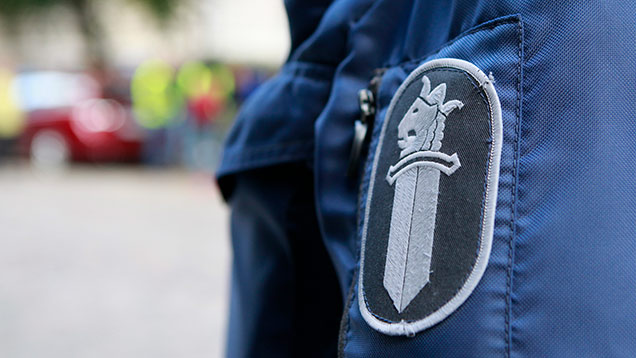Minister of the Interior Ohisalo welcomes report by the police

Commissioned by Minister of the Interior Maria Ohisalo, the National Police Board requested the police to give an account of its actions during a demonstration in Narinkkatori in Helsinki on 19 October. The National Police Board has now delivered the report and its own statement to the Minister. The report also covers the demonstration of 14 October and other preliminary data based on which the threat assessment was formed. On the basis of the report, the police acted appropriately.
Minister Maria Ohisalo said: "I was pleased to receive such a detailed account. The report indicates that the police estimate that the demonstration might have led to disturbances was justified. The report is comprehensive and the situation was such that the police would have had grounds to stop the demonstration. I’m pleased that the situation didn’t go that way and that the police secured the right of assembly and calmed the situation with more limited means. This allowed the demonstration to continue despite the incident."
"The right of assembly and freedom of expression are essential values in Finnish society. I encourage demonstrators to negotiate with the police beforehand on how to demonstrate. This will ensure incident-free and successful demonstrations already in advance. It’s also important that the Helsinki Police discussed with the Kurdish demonstrators after the event. Dialogue and openness are the keys to building trust."
"The preparedness level of the police sparked discussion. On the basis of the report, the use of police officers specially trained and equipped for crowd control was justified based on the threat assessment of the event. Heavy equipment is not used without good cause. In this case, too, it was necessary for the police officers to equip themselves to be able to ensure the safety of the public and the police."
According to National Police Commissioner Seppo Kolehmainen, the task of the police is to safeguard everyone’s right to arrange and participate in meetings and demonstrations, as laid down in the Constitution. At the same time, it is the duty of the police to protect people and the environment in demonstrations.
Kolehmainen said: "Under the Assembly Act, all public events must be organised peacefully, without compromising the safety of participants and bystanders. The police have the right to issue instructions and orders to ensure safety, and they must all be complied with. Restrictive regulations are never issued on light grounds."
Ohisalo and Kolehmainen jointly said: "In order to guarantee the fundamental rights and the safety of demonstrators, bystanders and police officers, it’s very important that the demonstrations comply with common rules, that the events are analysed in advance jointly by the organisers and the police and that the plans are communicated openly.
Police preparedness and course of events
The preparations and equipment of the police for the demonstration on 19 October were primarily based on the fact that the demonstrators in the previous demonstration on 14 October had not followed the instructions and orders of the police. The demonstration of 14 October had caused some dangerous situations: demonstrators drove a car in the middle of crowds of people and threw stones. All available police patrols had to be dispatched to the scene so that the situation could be controlled. Although the two demonstrations were organised by different groups, the groups responsible for the arrangements included partly the same persons. Based on the report, the use of a specially trained and equipped crowd control unit (JOUHA) to ensure safety during the demonstration was justified.
Prohibiting the use of a vehicle in the protest march on 19 October was also a justified measure. The same car was also used in the demonstration on 14 October.
The organiser of the demonstration did not notify in advance that a passenger car would be brought into the procession. On site, the police repeatedly forbade the use of the vehicle in the middle of the crowd for safety reasons. The organisers said that they did not intend to comply with the police order, and the vehicle was driven to Narinkkatori. Despite repeated orders to stop the vehicle the driver did not stop. Police officers attempted to prevent the vehicle from moving by driving a police car in front of it, but the driver tried to go around the police car by driving the vehicle in the middle of the crowd. For this reason, the police had to resort to force to stop the vehicle.
At the same time, a demonstrator stepped in front of the police car that was attempting to stop the forbidden vehicle and so prevented the police car from moving. Despite orders from the police, the demonstrator used strong resistance, knocked down a police officer and grabbed a non-lethal riot-control gun that was hanging around the neck of another police officer. The police officer who was knocked down was injured in the situation. Police officers next used an electroshock weapon on the demonstrator’s leg, whereupon the individual let go of the riot gun.
Based on the report, the use of a remote Taser against one of the demonstrators was the mildest and most appropriate course of action in the situation.
After the event, Kurdish representatives and the Helsinki Police have discussed the situation with a view to avoiding a similar escalation of events at subsequent demonstrations.
Inquiries:
Jarno Lappalainen, Special Adviser to Minister of the Interior Ohisalo, tel. +358 40 053 6973